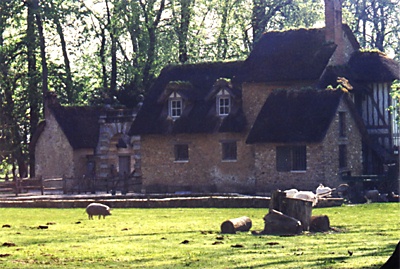All Nonfiction
- Bullying
- Books
- Academic
- Author Interviews
- Celebrity interviews
- College Articles
- College Essays
- Educator of the Year
- Heroes
- Interviews
- Memoir
- Personal Experience
- Sports
- Travel & Culture
All Opinions
- Bullying
- Current Events / Politics
- Discrimination
- Drugs / Alcohol / Smoking
- Entertainment / Celebrities
- Environment
- Love / Relationships
- Movies / Music / TV
- Pop Culture / Trends
- School / College
- Social Issues / Civics
- Spirituality / Religion
- Sports / Hobbies
All Hot Topics
- Bullying
- Community Service
- Environment
- Health
- Letters to the Editor
- Pride & Prejudice
- What Matters
- Back
Summer Guide
- Program Links
- Program Reviews
- Back
College Guide
- College Links
- College Reviews
- College Essays
- College Articles
- Back
Plymouth Colony
The pilgrims set off for Plymouth in September 1620. There were about 102 passengers, approximately 50 men, 20 women, and 32 children. Scattered among the group were farmers, woodworkers, shopkeepers, blacksmiths, weavers, and servants. There were also 37 Separatists- those who went for religious reasons. After a long two-month trip, after being tossed like a toy, they saw land.
They first were going to settle in Cape Cod but the water was to shallow for the ship to go in and out with supplies. There were also too many Indian tribes.
In December, several men set out on a smaller boat called a “shallop”. A bad storm took them to Plymouth and it had a good harbor. It was good for other reasons also.
1.
A hill provided them with a good lookout place.
2.
There were freshwater springs for drinking water
3.
There was flax and hemp so they could make rope.
4.
Wild grapes, herbs, onions, berries, fish, lobster, crabs and muscles so were plenty of good things to eat.
5.
There were fields that been cleared by the Indians so there wasn’t much work.
6.
There weren’t any Indians.
They hurried back to the Mayflower. They told Captain Jones and the Mayflower arrived three days later.
They had a really harsh first winter. One terrible disease they reported was scurvy. Scurvy made your gums turn purple and made your gums bleed. Then your teeth fell out. A disease that probably killed many was pneumonia. At the end of the winter nearly half the pilgrims had died. Only one family had not lost a loved one.
At first there were a lot of houses along a short street. At first, not many people had their own homes. If you were a small family you would usually share a house with another small family.
The biggest building, that protected Plymouth, was called the meetinghouse. The first level of the building served as a church. The church was in the same building as the fort because the Pilgrims believed that it didn’t matter about the building it just mattered about the people. The Sunday service was VERY long. The first service was from eight a.m. until noon then another from 2 p.m. to five or six p.m. The second level served as a fort. The men would guard the town incase of an Indian attack.
In fall of 1621 the pilgrims had a great harvest. So they decided to have a feast. The 50 remaining pilgrims worked hard preparing for the three-day feast. They ate deer, fish, stewed eels, ducks, geese, and lots of vegetables. They invited an Indian named Squanto who then brought 50 other Indians. Between meals they had races, the Indian men sang for the pilgrims.
Captain John Smith wrote that in 1624 about 180 people lived there. Plymouth is and will always be remembered.
Presidents that were Descendents of Pilgrims
1.
John Adams
2.
John Quincy Adams
3.
Zachary Taylor
4.
Ulysses S. Grant
5.
James Garfield
6.
Franklin D. Roosevelt
7.
George Bush
8. George W. Bush

Similar Articles
JOIN THE DISCUSSION
This article has 0 comments.
